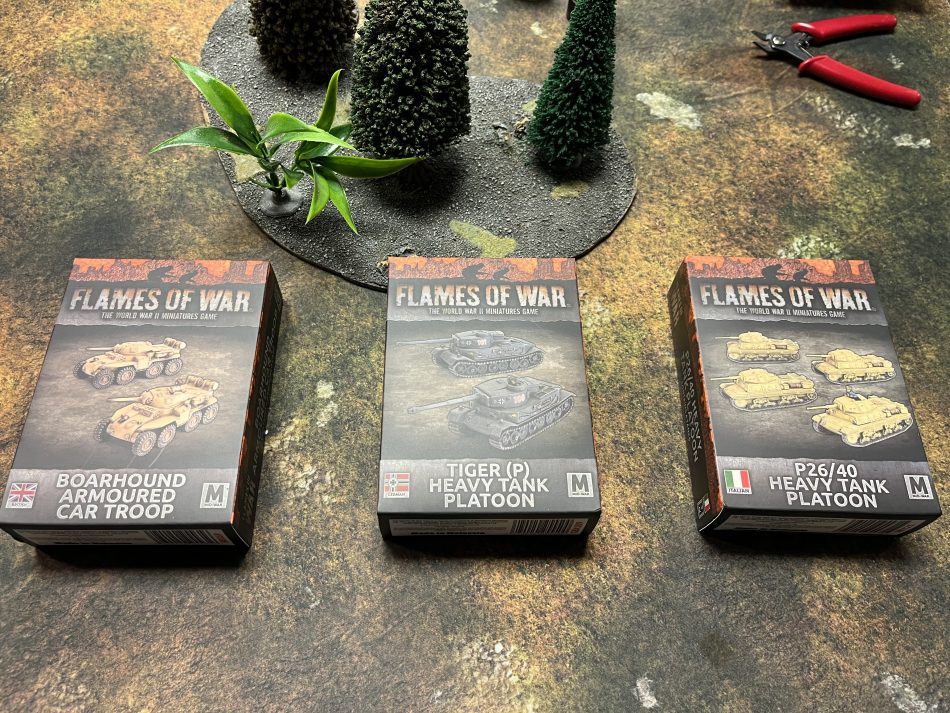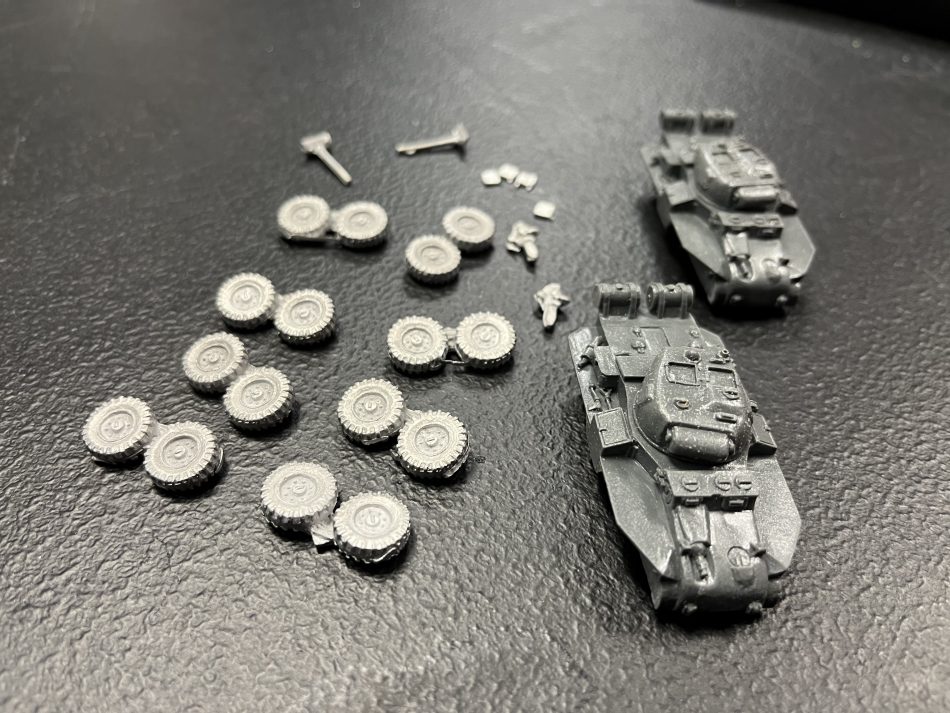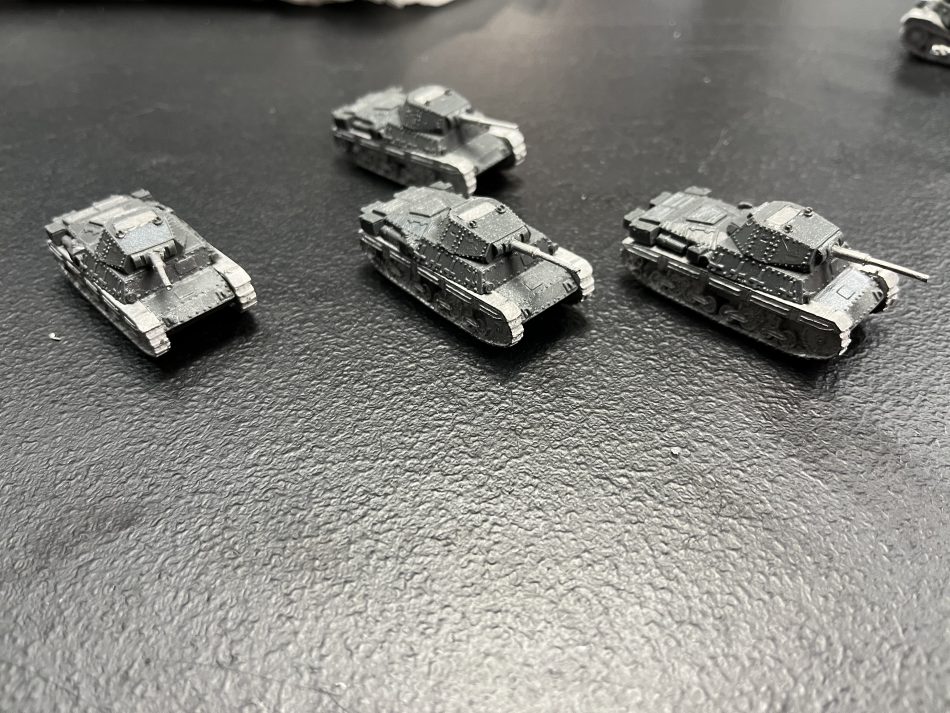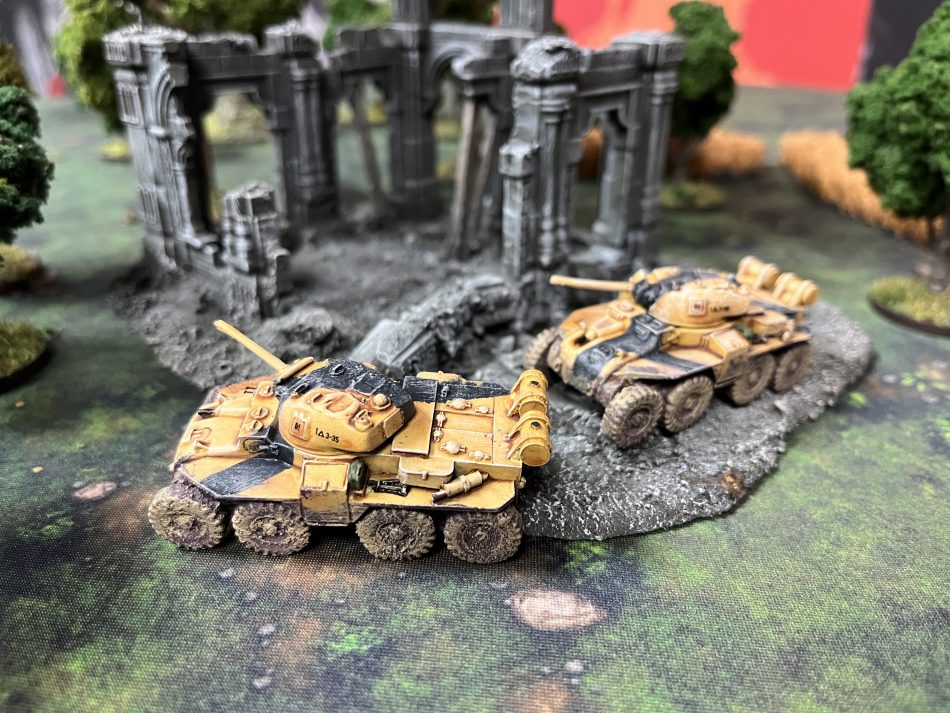Flames of War The Return of the Experimentals
By Chris Masucci
Having been out of the Flames of War scene for about ten years now, I was disappointed to find that many of the figures that I remember from years past have long disappeared from Battlefront’s catalog. Being a big fan of the Dieselpunk, alternate WW2, and “Weird War” styles, one of the biggest casualties for me was Battlefront’s collection of what were dubbed “Mid War Monsters”.
This series introduced several experimental or obscure vehicles to Flames of War in its mid-war theaters. The mid-war monsters included everything from little-used but produced vehicles such as the Boarhound and Italian P40, to things that never left the drawing board.
Cast in the old Battlefront styled resin chassis with metal parts, these vehicles were a bit of an oddity that I never personally saw much of on the tabletop. However, with my recent projects centering around alternate WW2 battles I wanted to see if I could once again hunt down some of these vehicles. Luckily enough Battlefront has begun to re-release certain models from the old Mid War Monsters range, dropping that old moniker and repackaging them with the standard Flames of War box.

For this project, I chose three boxes of models. The British Boarhound armored car, the German Tiger (P), and the Italian P26/40. All three of these vehicles were produced during the war with the Tiger (P) and Italian P26/40 seeing limited service.
The first figures I assembled were the Boarhounds. An incredibly odd design that resembles a Sherman tank with the treads replaced with wheels, the Boarhound was developed by the US in 1941 with 27 vehicles being delivered to the British forces in North Africa. Despite its presence in the African theater, the Boarhound never saw combat service, instead of being relegated to base duties and convoy operations.
As for the models, all the vehicles are still in the old resin/metal format. The Boarhounds consist of a resin body and turret, metal wheels, gun, and a few details like hatch covers and vehicle commanders. The models were easy to assemble with the wheels fitting into place with no errors. I chose to model each hatch closed and didn’t use any of the vehicle commander bits.


Next up was the Tiger (P), the largest and heaviest of the models I built as the solid metal track sides add a lot of heft to the figure. The Tiger (P) is another odd design that resulted from the constant competition between Porsche and Henschel. The Tiger (P) is the rejected Tiger I prototype from Porsche. Although several hulls were constructed almost all were later converted into Ferdinand self-propelled guns.
A single Tiger (P) was used as a command tank in 1944. These vehicles required a bit more work as the resin chassis needed a bit of sanding to get the track sides to fit snugly. The large 88mm gun is keyed to fit within the turret but still requires some careful placement.


The final vehicle was the Italian P26/40 a very late design that was only just seeing production before Italy fell to the allies. Although it was designated as a heavy tank by the Italian army, the P26/40 was really suited to be more of a medium tank.
The P26/40 was by far the smallest vehicle out of the three I had chosen, its frame even dwarfed by the Boarhound. The P26/40 also included four vehicles in the box instead of the two models the Tiger and Boarhound boxes included. Assembly of the Italian tanks was also brief, only needing slight sanding.
With all the models assembled, I decided to paint both the Tigers and P26/40 tanks in a German panzer gray scheme. As I plan on using all of these for a dieselpunk setting and wasn’t going for any historical scheme, I wanted to get a bit creative with the Boarhounds, putting down a desert yellow base and painting field gray camo stripes. Satisfied with the results I am definitely looking to Battlefront re-releasing the rest of the old experimental range. These vehicles will be useful kits for gamers looking to play historical or historical fantasy games in 15mm.




